Welcome to On Verticality. This blog explores the innate human need to escape the surface of the earth, and our struggles to do so throughout history. If you’re new here, a good place to start is the Theory of Verticality section or the Introduction to Verticality. If you want to receive updates on what’s new with the blog, you can use the Subscribe page to sign up. Thanks for visiting!
Click to filter posts by the three main subjects for the blog : Architecture, Flight and Mountains.
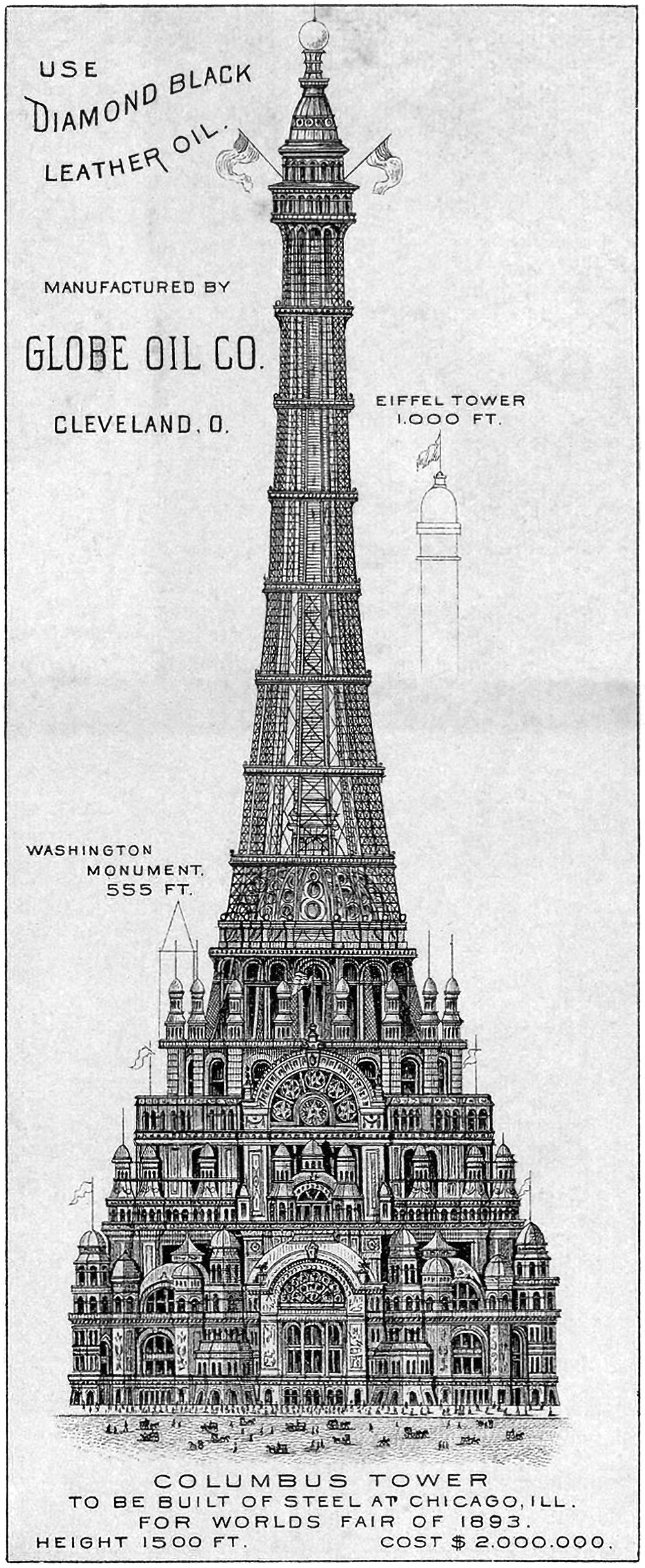
The Chicago Columbus Tower
Pictured above is the proposed Chicago Columbus Tower, which was designed to be the centerpiece of the 1893 World’s Columbian Exposition in Chicago. It was 455 meters (1,500 feet) tall and would’ve cost two million dollars at the time (roughly 62 million dollars today). It’s an elaborate and ambitious proposal that was meant to out-Eiffel the Eiffel Tower, which was built for the previous World’s Fair in 1889. As if to hit this point home, the above illustration includes height references to the Eiffel Tower and the Washington Monument, which would’ve been dwarfed by this new structure.
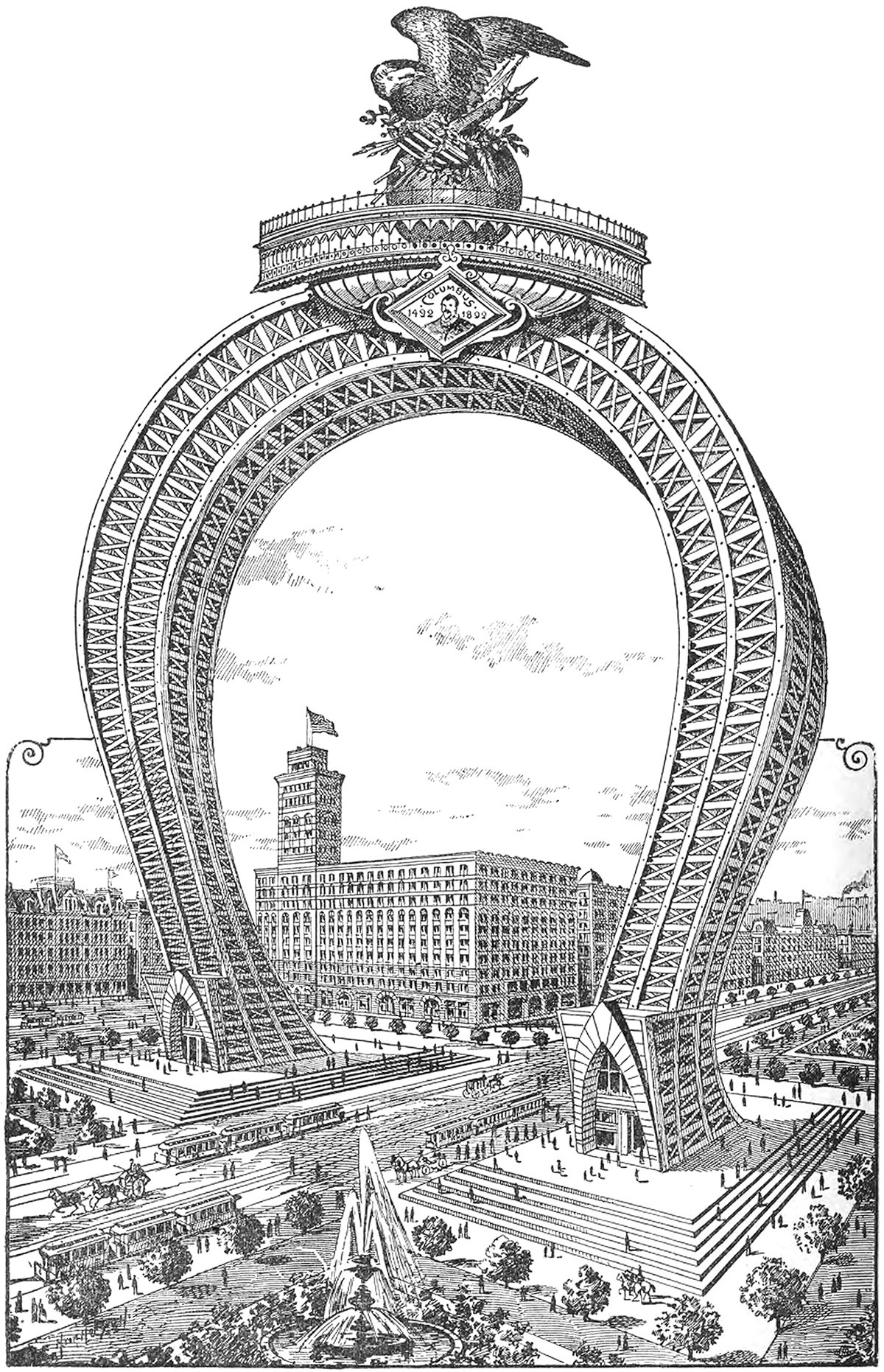
The Columbian Triumphal Arch
Here’s a doozy. It’s an 1891 proposal for a monumental arch that would’ve been the crown of the 1893 World’s Columbian Exposition in Chicago. It would’ve straddled South Michigan Avenue on the block adjacent to the Auditorium Building, which can be seen just behind the arch in the illustration. I can’t find any information on the designer, but whoever drew it up was no stranger to the Daniel Burnham quote make no small plans.
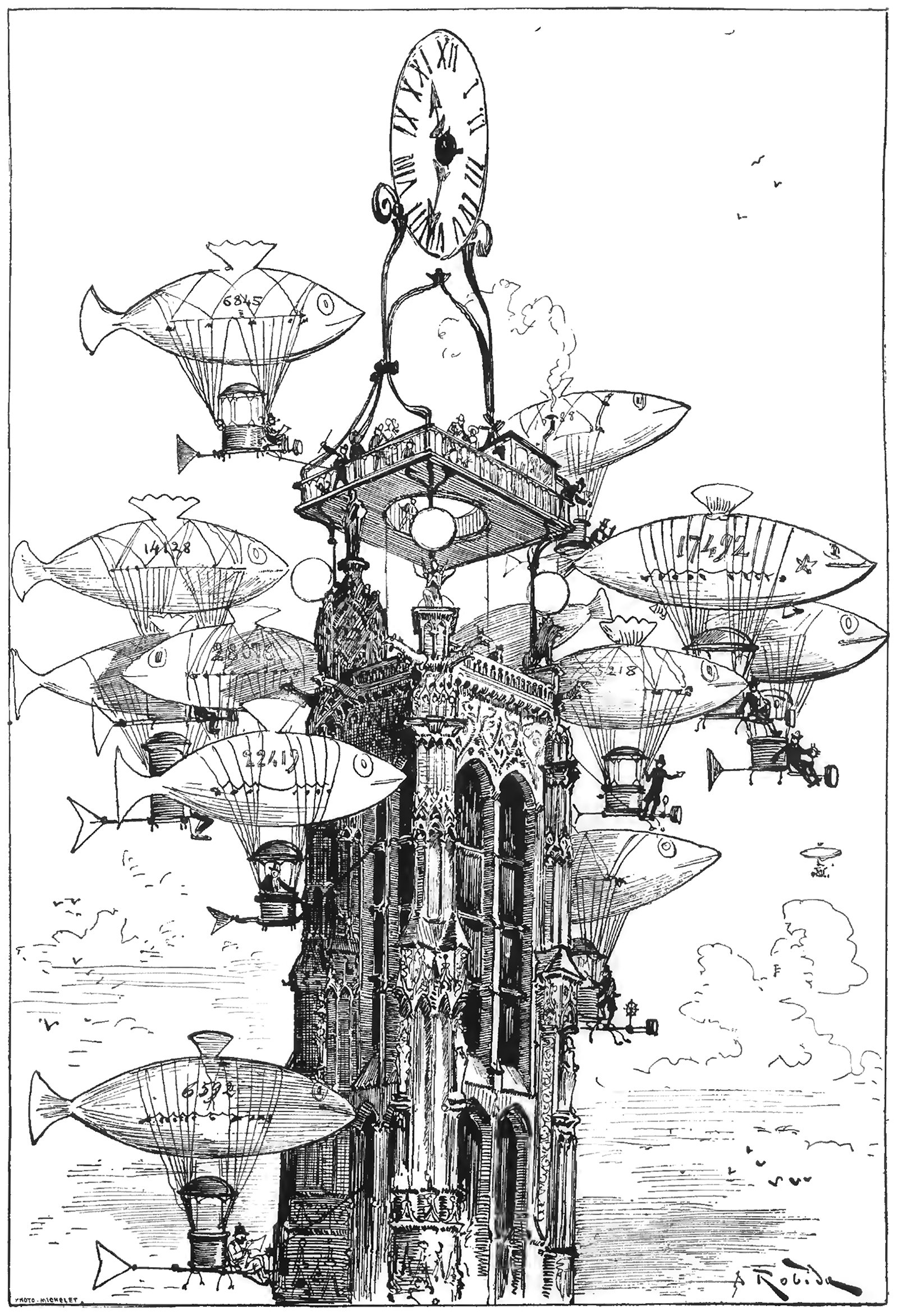
An Aerocab Station atop the Tour Saint-Jacques
The above illustration was drawn by Albert Robida for his 1883 novel Le Vingtième Siècle, or The Twentieth Century. This illustration was titled La Station d'Aerocabs de la Tour Saint-Jacques, or The Aerocab Station of the Tour Saint-Jacques, and it shows a raised platform and clock atop the iconic Parisian structure. Flocking around the tower is a group of dirigibles made to look like fish. What’s charming about the image is how the cluster of dirigibles resemble a school of fish, almost crowding out the tower itself from the image.
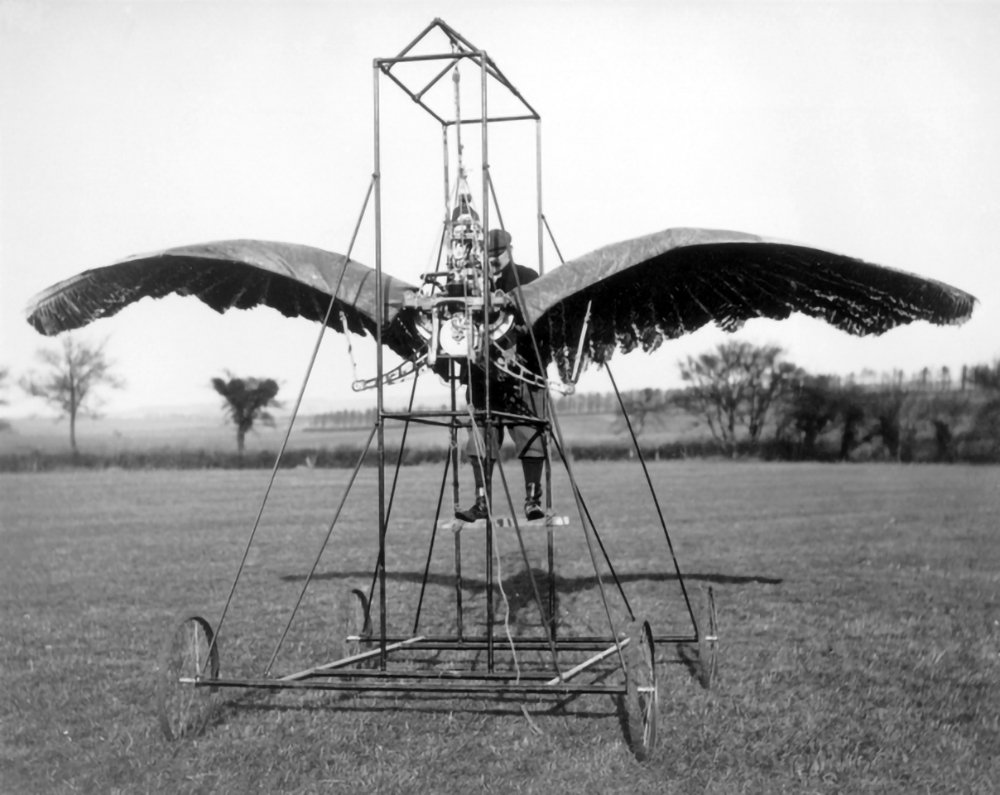
E.P. Frost’s Ornithopters
Pictured above is a photo of E.P. Frost’s second ornithopter prototype. It consisted of a large a pair of wings and a metal scaffold, and it was powered by an internal combustion engine. According to Frost, the machine successfully achieved liftoff under its own power in 1904. This wasn’t a sustained flight, however, but rather a jump or a hop.
There's no sensation to compare with this. Suspended animation, a state of bliss. Can't keep my mind from the circling sky. Tongue-tied and twisted, just an earth-bound misfit, I.
-David Gilmour of Pink Floyd, English songwriter and musician, born 1946.
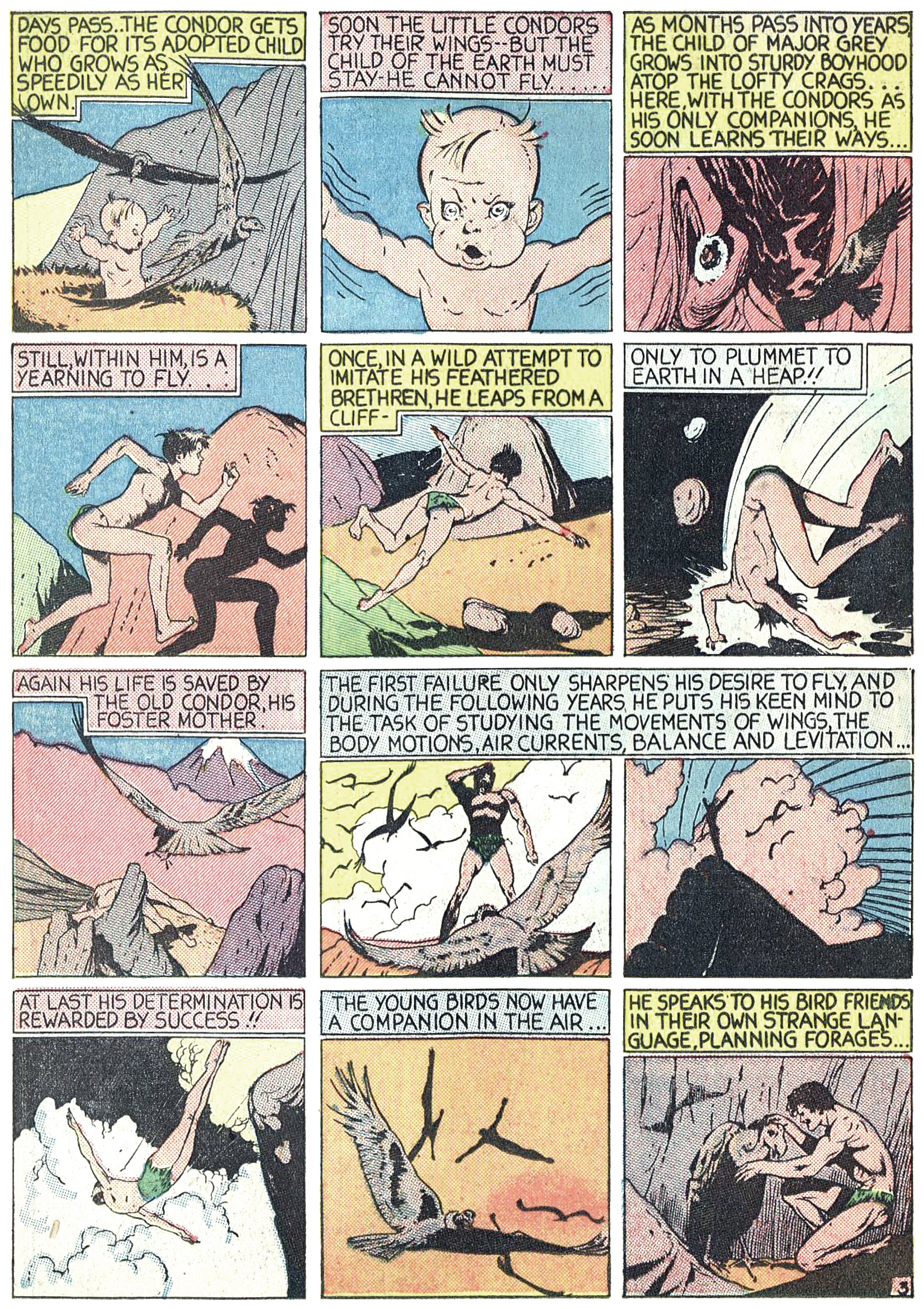
The Black Condor : The Man Who Can Fly Like A Bird
The first failure only sharpens his desire to fly, and during the following years, he puts his keen mind to the task of studying the movements of wings, the body motions, air currents, balance and levitation.
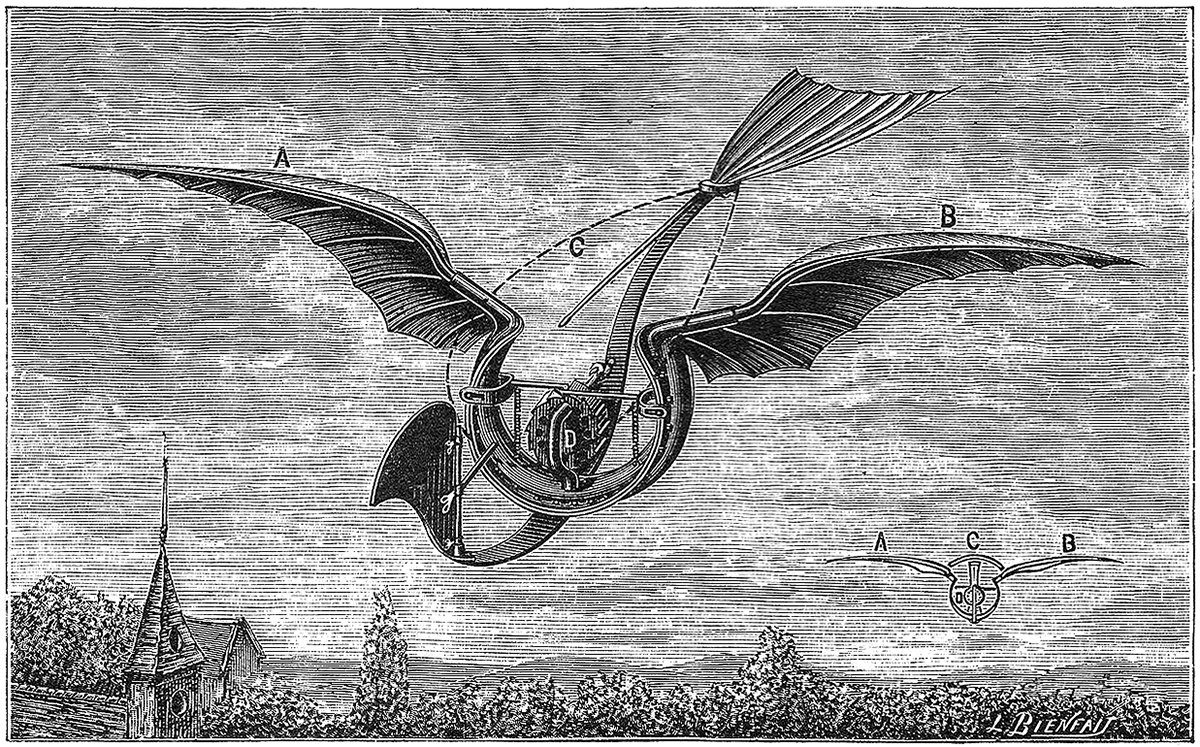
Gustave Trouvé’s Flügelflieger
Pictured above is an ornithopter design from 1891 by French polymath and inventor Gustave Trouvé. It was called the Flügelflieger, which means winged flyer in German. It featured a pair of wings, a tail, a front rudder, and it was powered by a centrally-placed rapid-succession gun cartridge. Due to the gunpowder charges, the machine was quite loud when flapping. It did work though; according to Trouvé it made a successful flight of 80 meters (262 feet) on 24 August 1891.
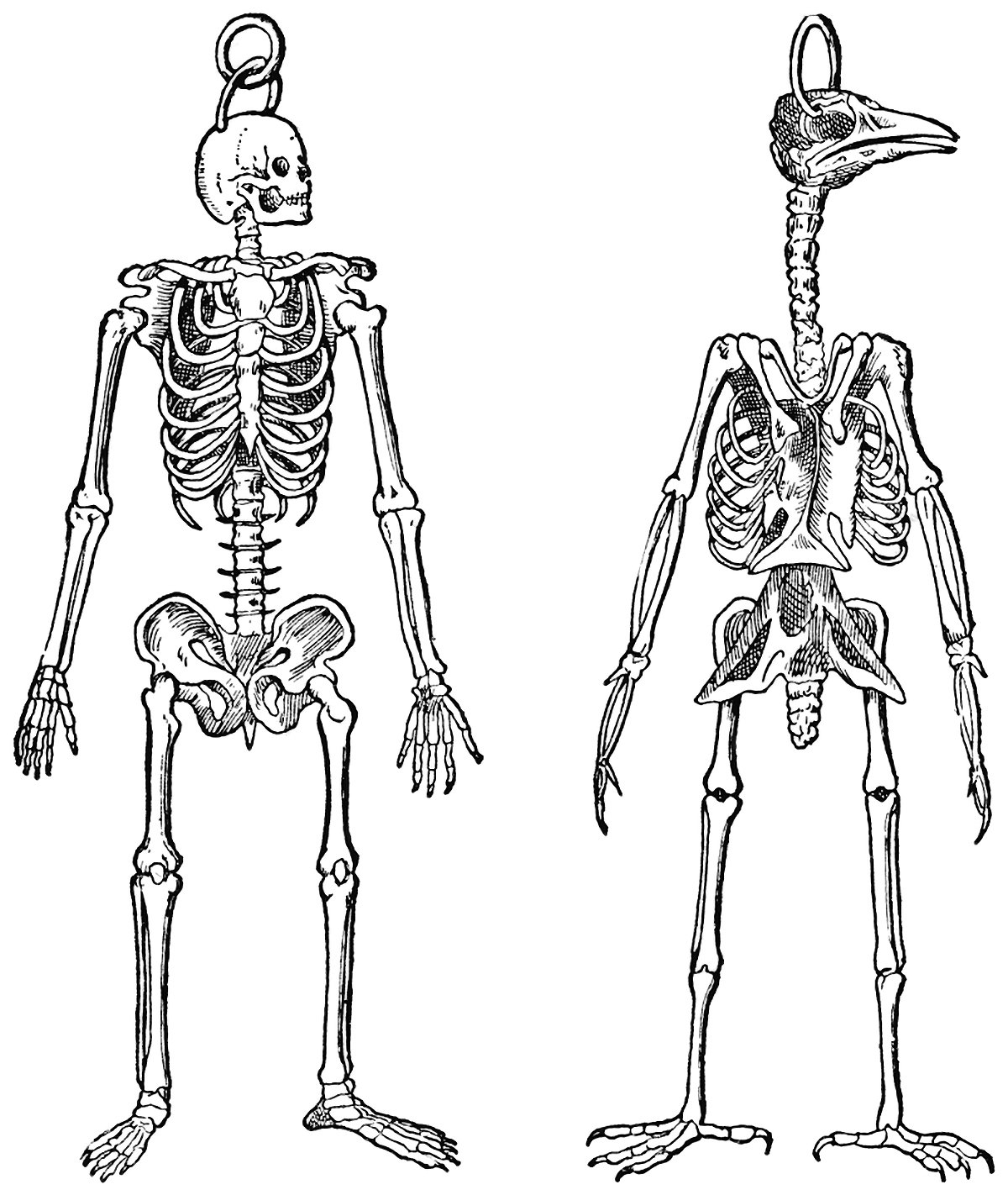
The Skeletons of a Man and Bird
Pictured above is a comparison between the skeleton of a human and a bird. What I find fascinating about this image is the choice of the artist to position the bird in a bipedal stance. I suspect this was done just to ease the comparison, but in a way it undermines the birds power of flight. This is an animal who is at home when in the open air, but here the bird is shown with its feet firmly planted on the ground, much like a human. The playing field has been leveled, so to speak, which puts the bird at a specific disadvantage.
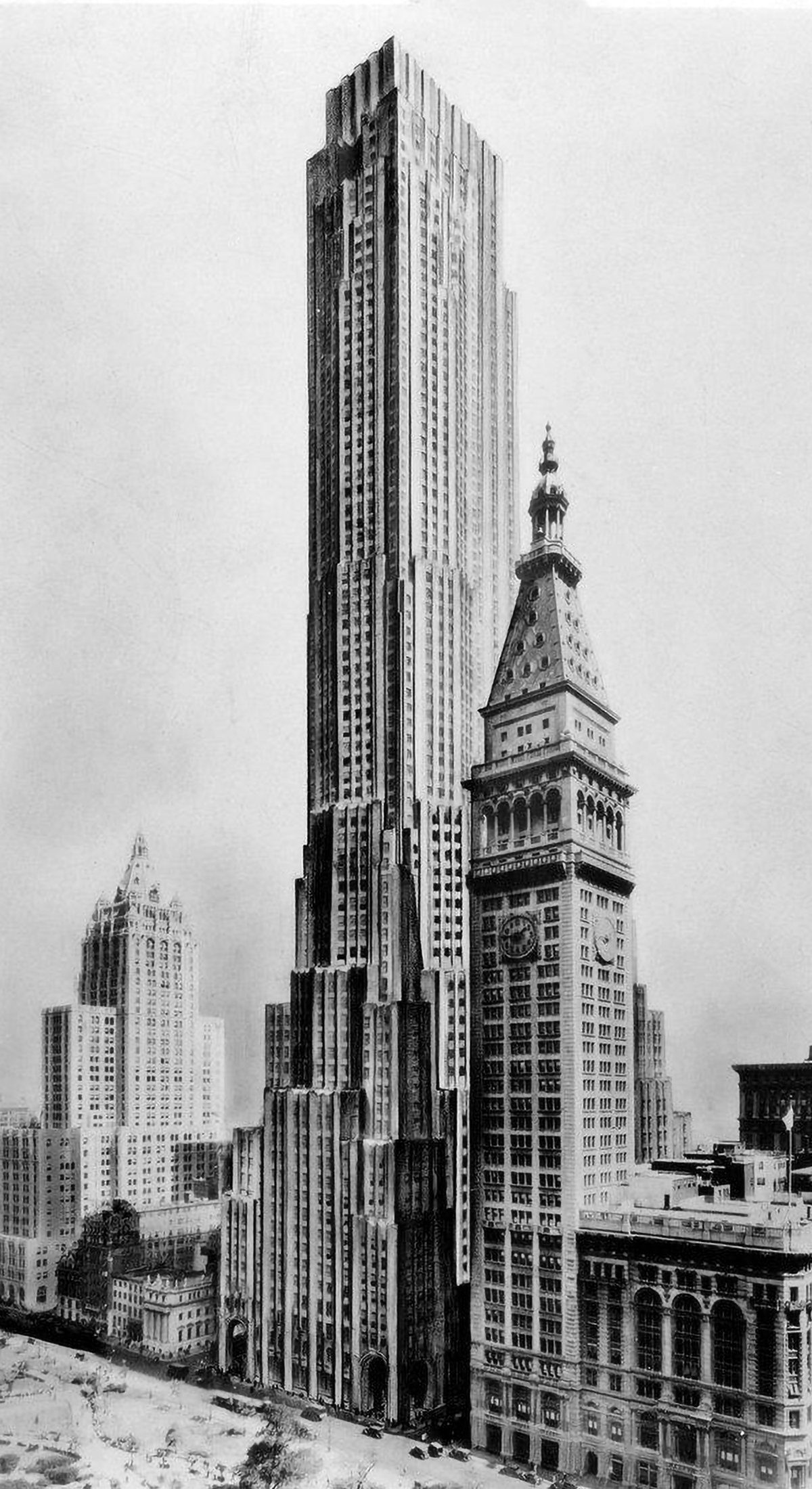
Best-Laid Plans : The Metropolitan Life North Building
The best-laid plans of mice and men oft go astray. This quote pretty much sums up the story of the Metropolitan Life North Building. What began as a design for the world’s tallest building ended with a bulky mid-rise building that feels too grand for its modest height. Pictured above is an illustration of the original design, located on the east side of Madison Square Park in New York City. Topping out at 100 stories tall, it would’ve been the tallest building in New York by a long shot. Then the Great Depression happened.
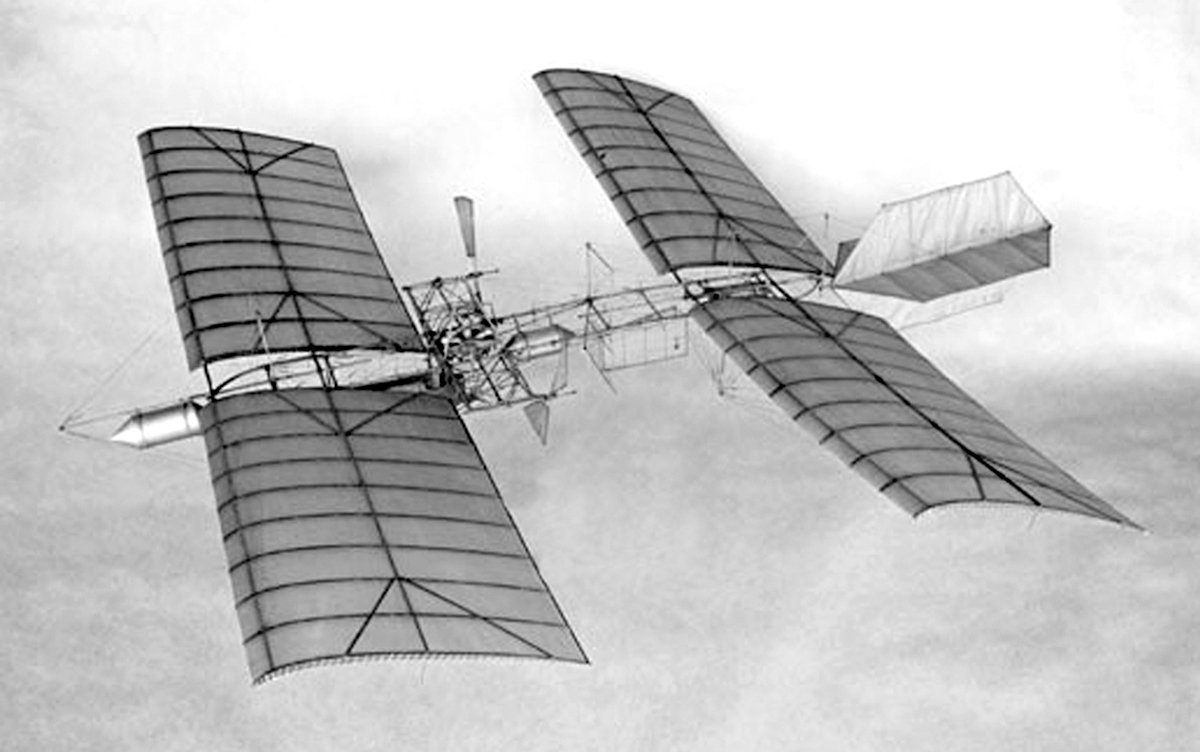
Samuel Langley’s Aerodrome
Samuel Langley was an astronomer and physicist who was the third secretary of the Smithsonian Institution. He was also a pioneer of aviation, most famous for his designs of the Langley Aerodrome, which he built and tested from 1901 to 1903. Pictured above is a photo of his Aerodrome No. 5, which was a pilot-less model that had success flying. Langley was unable to repeat this success with larger, piloted designs, however.
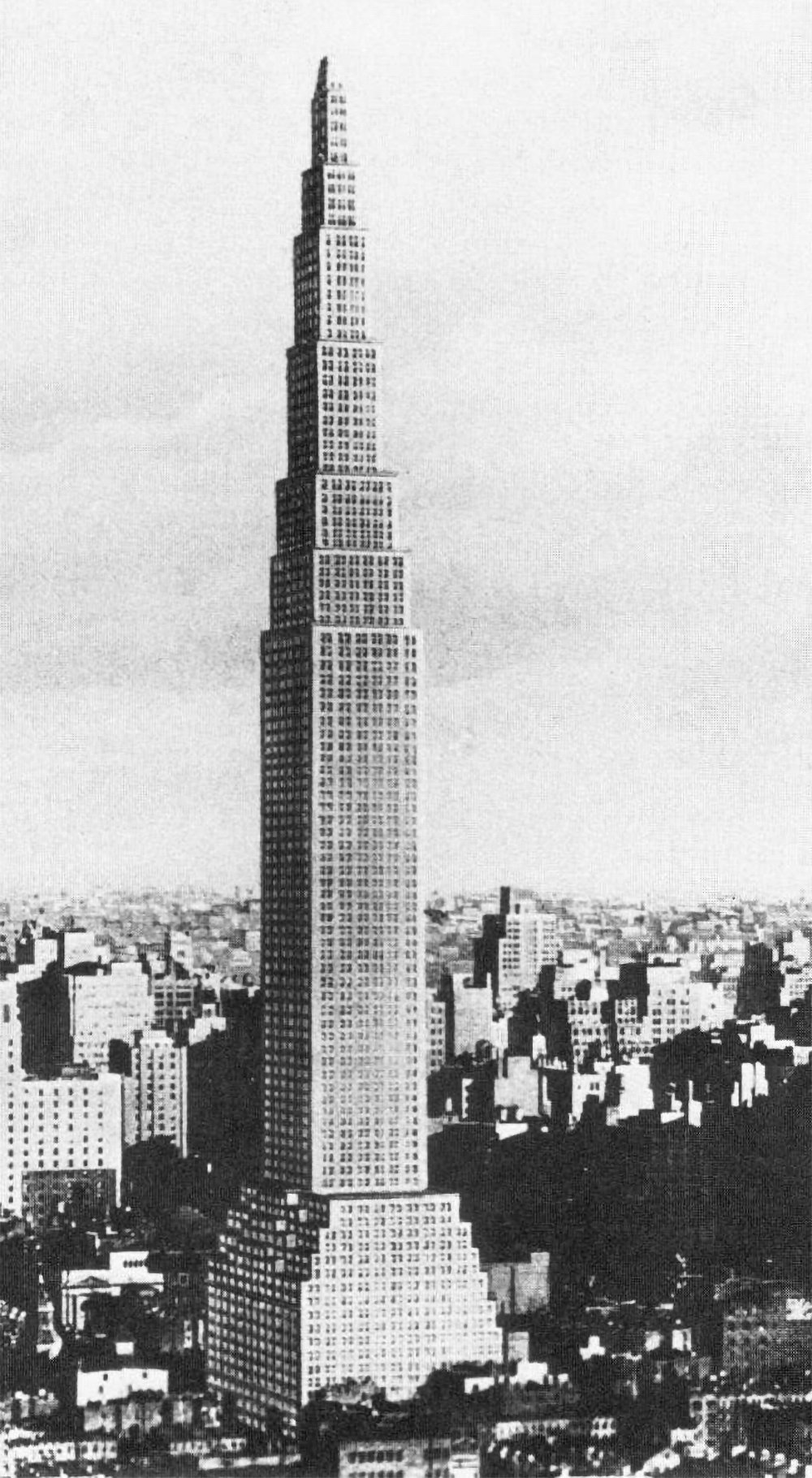
The Larkin Tower
Nearly all proposals for the tallest building in the world include some type of defining element or design flourish that make them unique and memorable. The Chrysler Building has its metallic crown. The Empire State Building has it’s mooring mast and antenna. Not the Larkin Building. It was designed in 1926 for a site on 42nd Street on Manhattan, and it was 368 meters (1,207 feet) tall, making it the tallest structure in the world by a long shot. Aside from this, there’s not much else to say about it.

The Towering Centerpiece of an International World Centre
Pictured above is a monumental tower designed by Ernest Hébrard as part of a design for an international world centre. It was a visionary project without a real location, and I suspect it was either academic, or he designed it in order to make a name for himself as an architect and an artist. Either way, this tower was the centerpiece of a much larger plan, but it speaks volumes about Hébrard’s intent with the plan.
“The union of altitude and solitude fills me with an arrogant sense of ownership. After all, the sky is my domain.”
-Philippe Petit, French high-wire artist, born 1949.
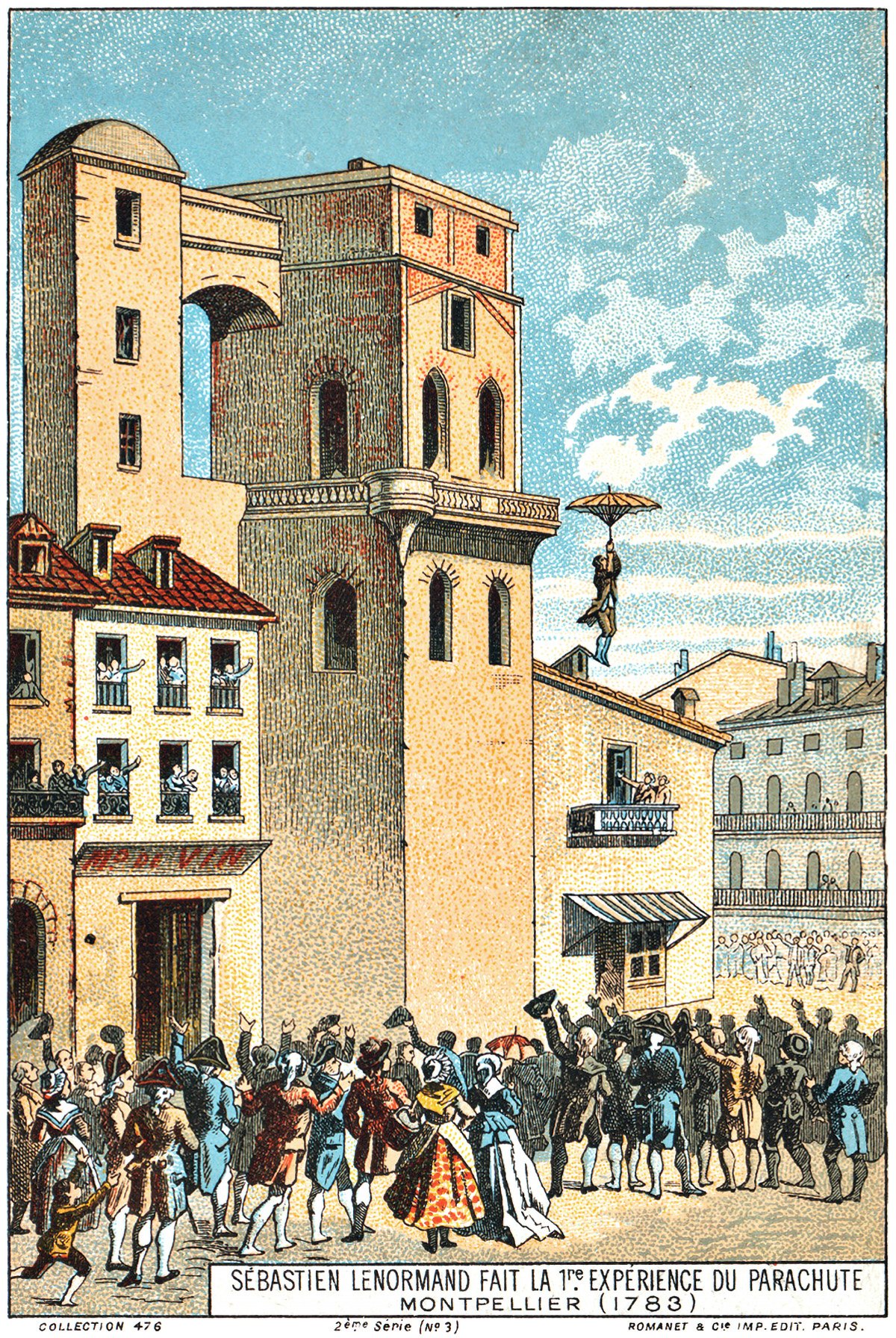
Sébastien Lenormand’s First Parachuting Attempt
Pictured above is a French illustration from 1890, showing Louis-Sébastien Lenormand leaping from a building with his parachute in Montpellier, France in 1783. He jumped from the Montpellier Observatory in front of a large crowd of onlookers who were hoping to witness the first-ever successful parachute demonstration. The caption reads Sébastien Lenormand Fait la 1re Expérience du Parachute, which means Sébastien Lenormand’s First Parachuting Attempt.
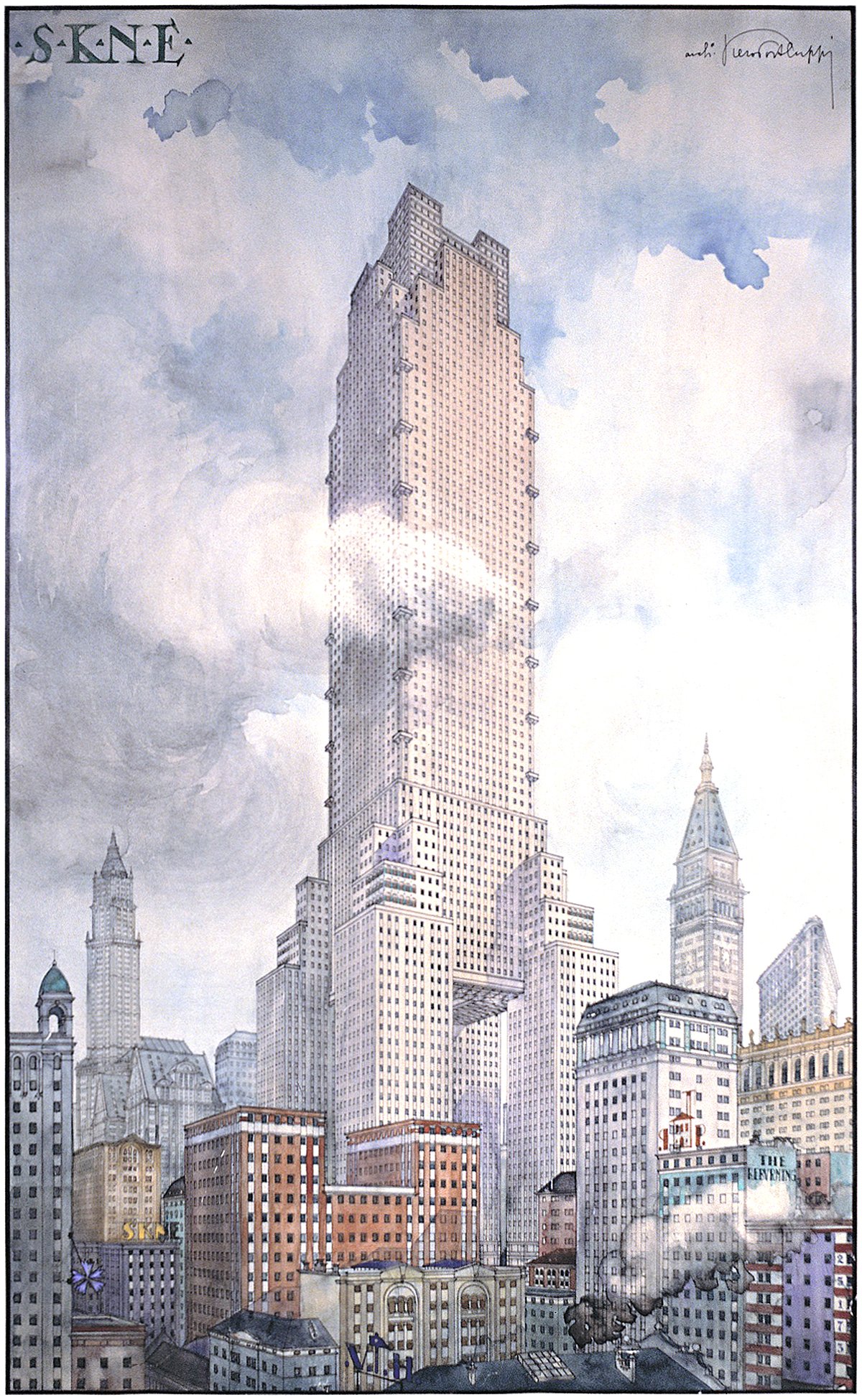
Piero Portaluppi’s SKNE Company Skyscraper
Pictured above is a conceptual design for a skyscraper by Piero Portaluppi from 1920. It was designed as the headquarters of the SKNE company for a site somewhere in New York. There’s two interesting angles here. The first is the tower itself, and the second is the method of representation shown.

The Horizontal Layers of a Building Site
I was recently browsing through some old textbooks of mine from architecture school, and I came across this gem of an illustration in a building systems textbook from my undergrad years. This was long before I began forming my theories related to verticality, so I was quite fascinated to see a strong correlation between my definitions of the underground, the surface, and the sky to the subsurface, the surface and the sky layers shown above.
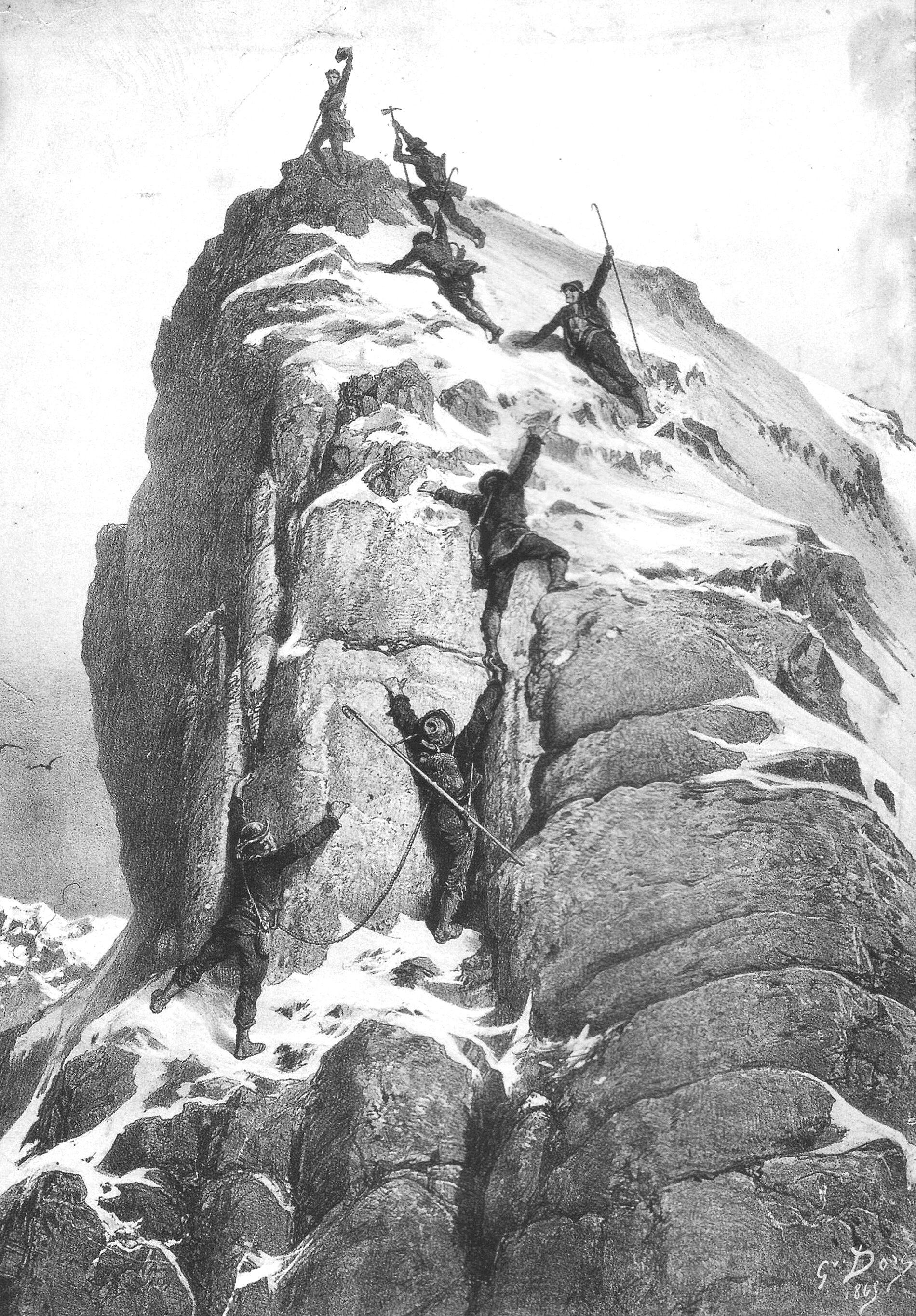
The First Ascent of the Matterhorn
There are few mountains in the world as instantly recognizable as the Matterhorn. Located in the Swiss Alps, this majestic pyramid of gneiss straddles the border between Switzerland and Italy and looms over the Swiss mountain town of Zermatt. Due to its location and visibility, it is legendary within the history of mountaineering . In the 1860’s it was the focus of an international competition to be the first to reach its summit. This story, which includes the first successful summit of the mountain, is a tale of triumph and tragedy, and it serves as a cautionary tale for mountaineers to this day.
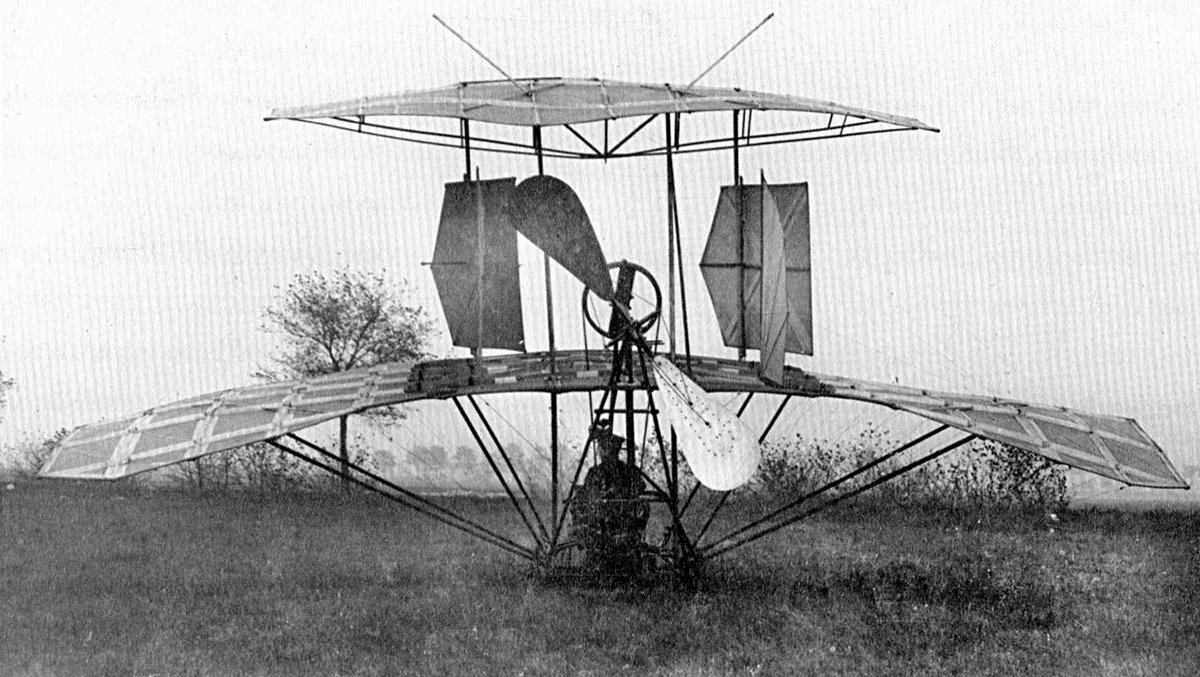
The Jatho Biplane and a Challenge to the Wright Brothers
Pictured above is the Jatho Biplane, built in 1903 by the German aviation pioneer Karl Jatho. During 1903, Jatho made a series of low flights with his machine outside Hanover, Germany. These flights took place a few months before the Wright Brothers achieved powered, controlled flight. We don’t know for sure if the Jatho Biplane was controlled, however. If it was, that means the Wright Brothers weren’t the first to achieve flight. If it wasn’t, the Jatho Biplane is just another prototype that got close, but didn’t actually achieve flight.
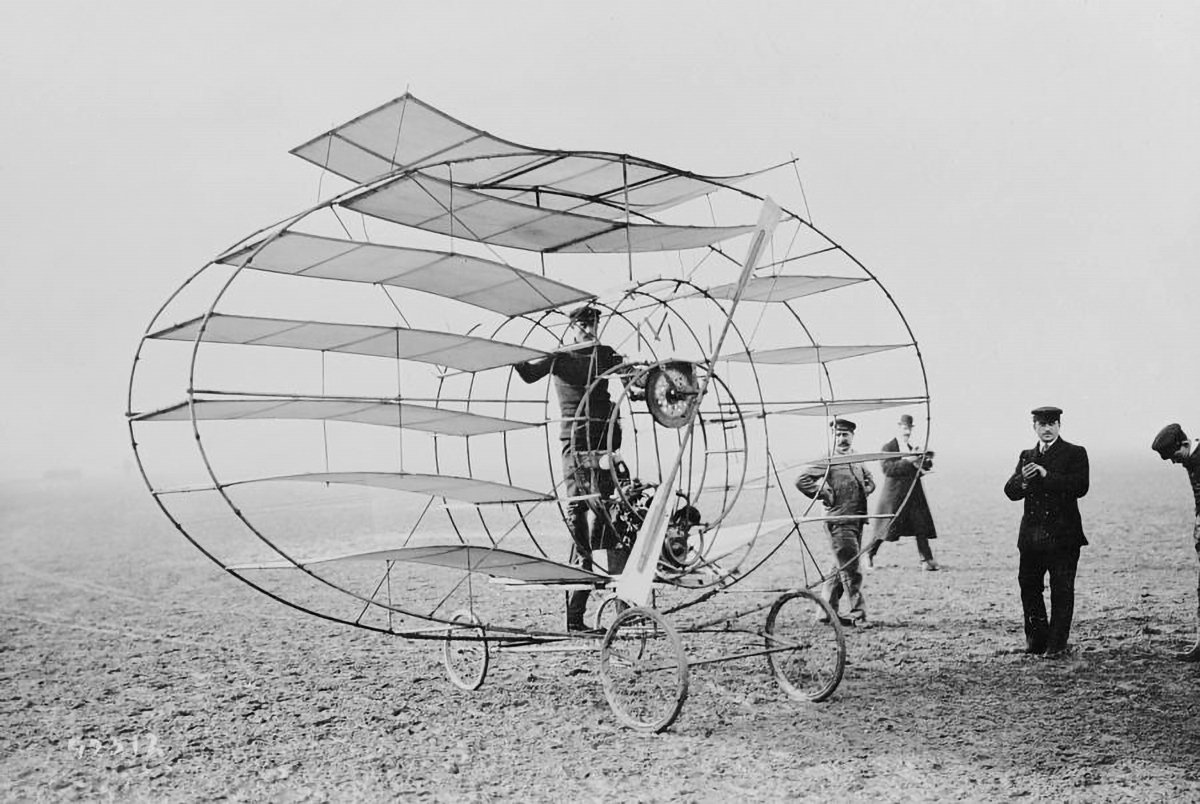
The Marquis Multiplane
If two wings can provide enough lift to make an aircraft fly, surely adding more wings must make it fly even better, no? It’s a silly question by today’s standards, but in the early days of flight it was a legitimate inquiry to be studied. One man who decided to test the theory was Marquis d'Ecquevilly, and pictured above is the Marquis Multiplane which he designed in 1908.
"On the summit, your soul becomes part of the mountain. It makes you feel alive."
-Nirmal “Nims” Purja, Nepalese mountaineer, born 1983.
